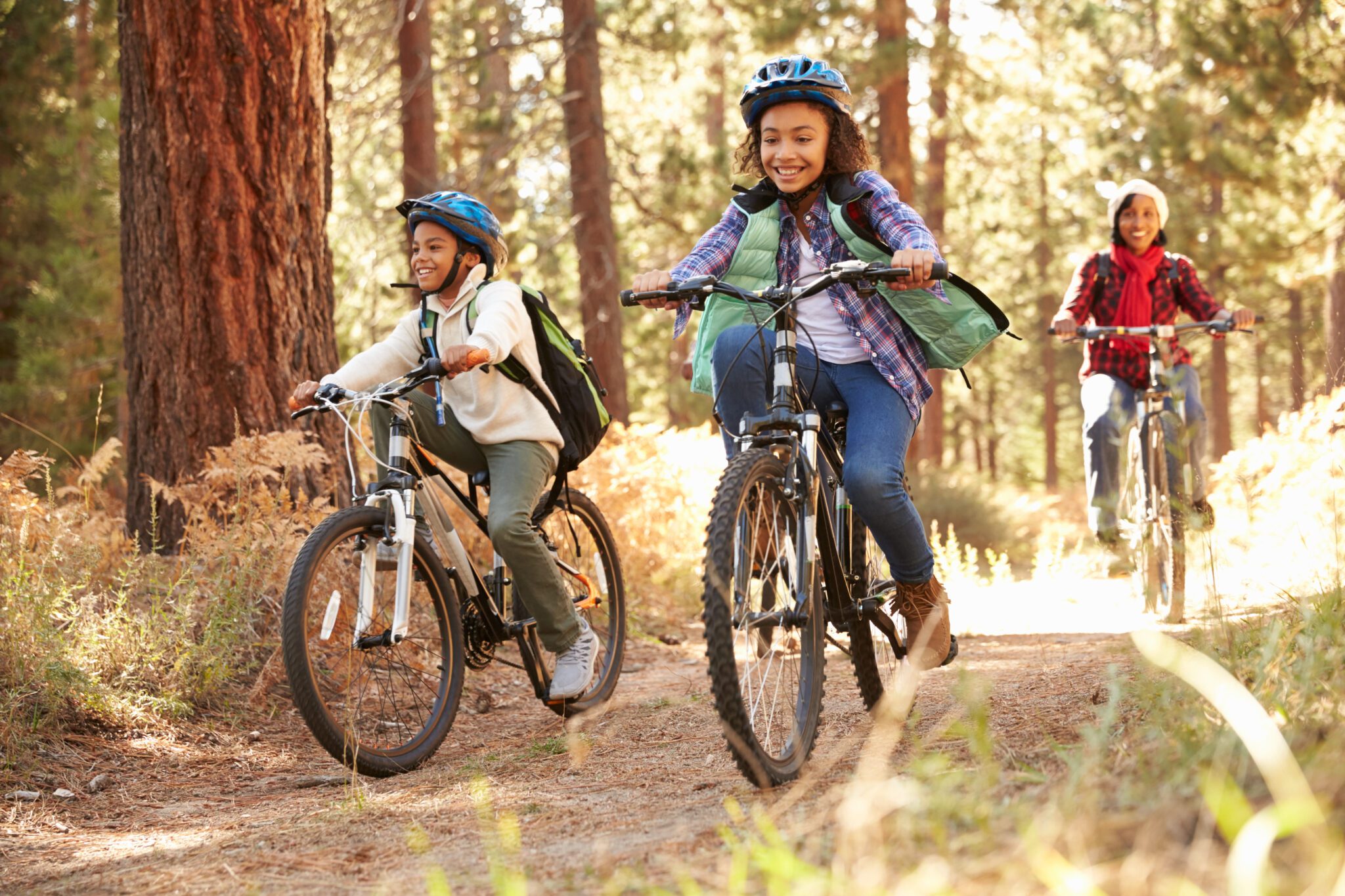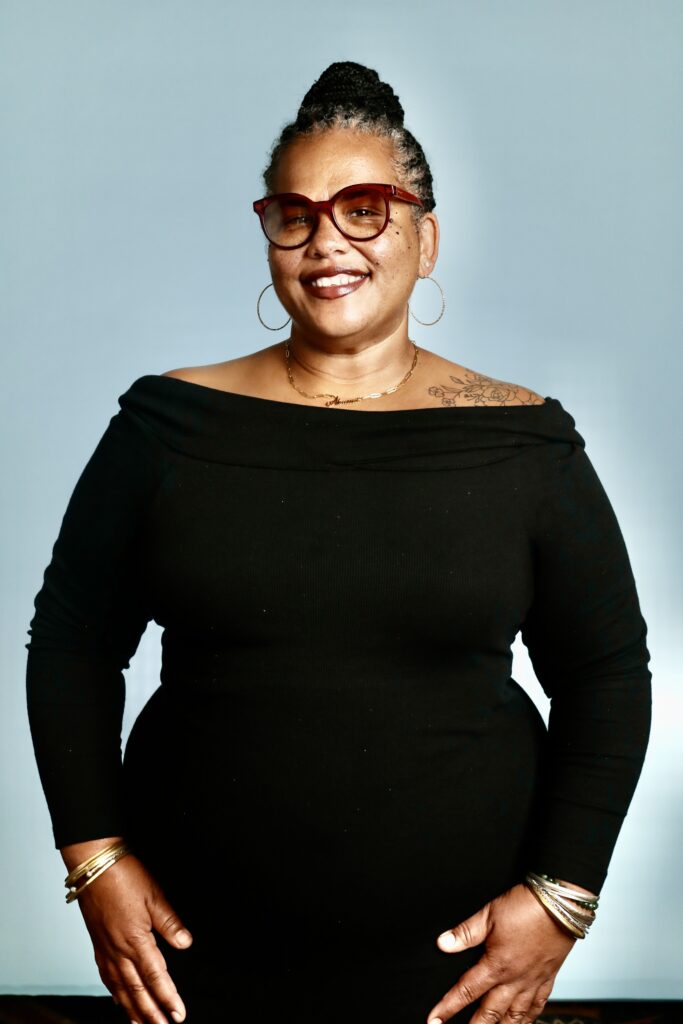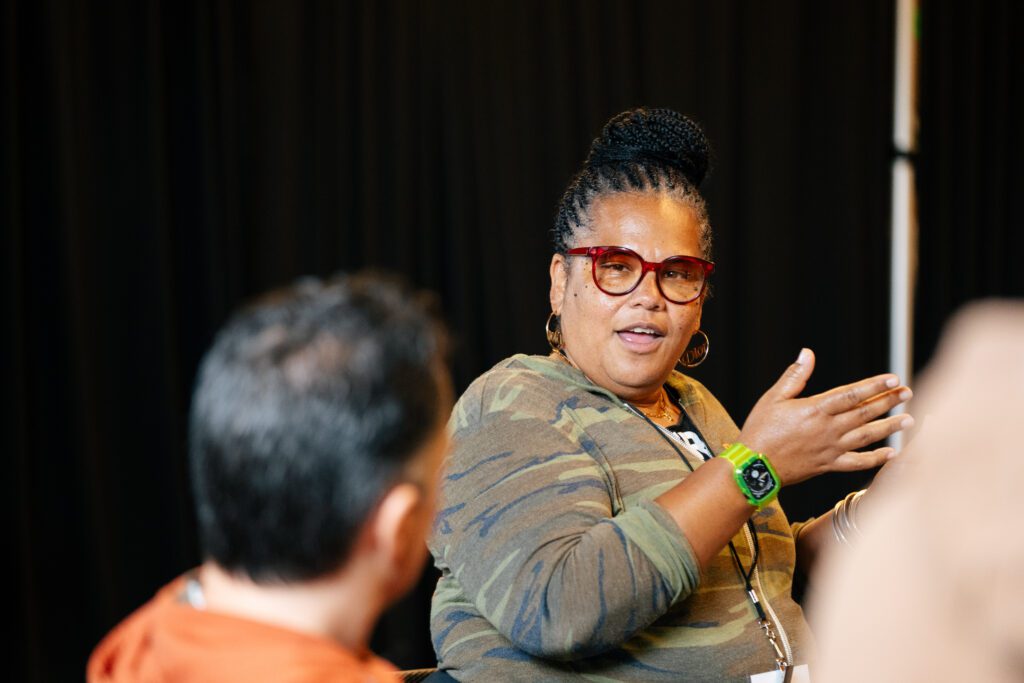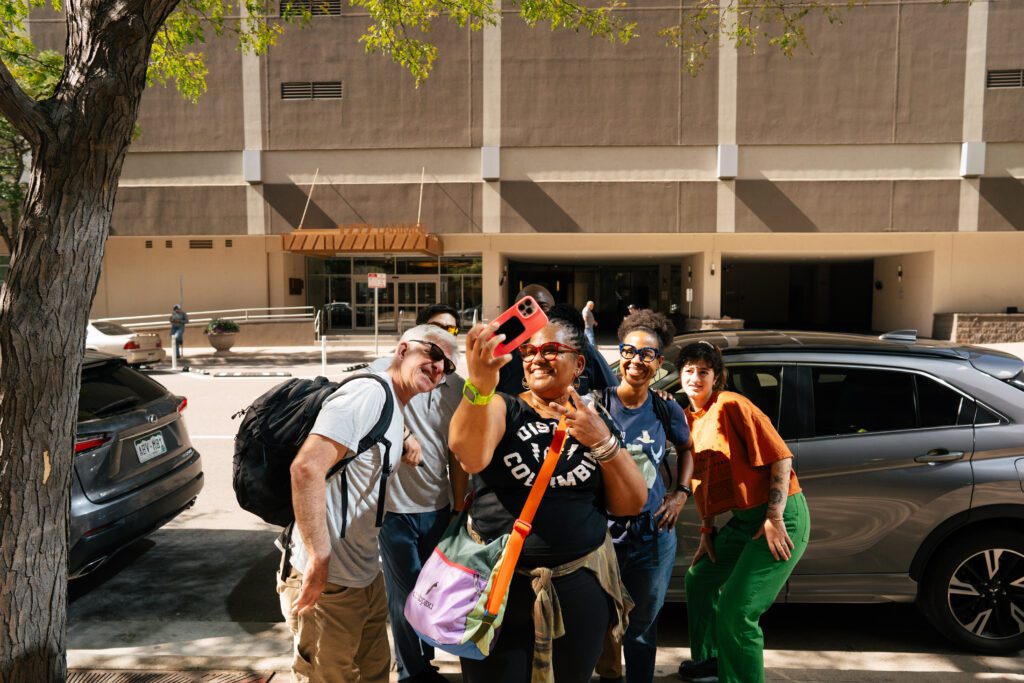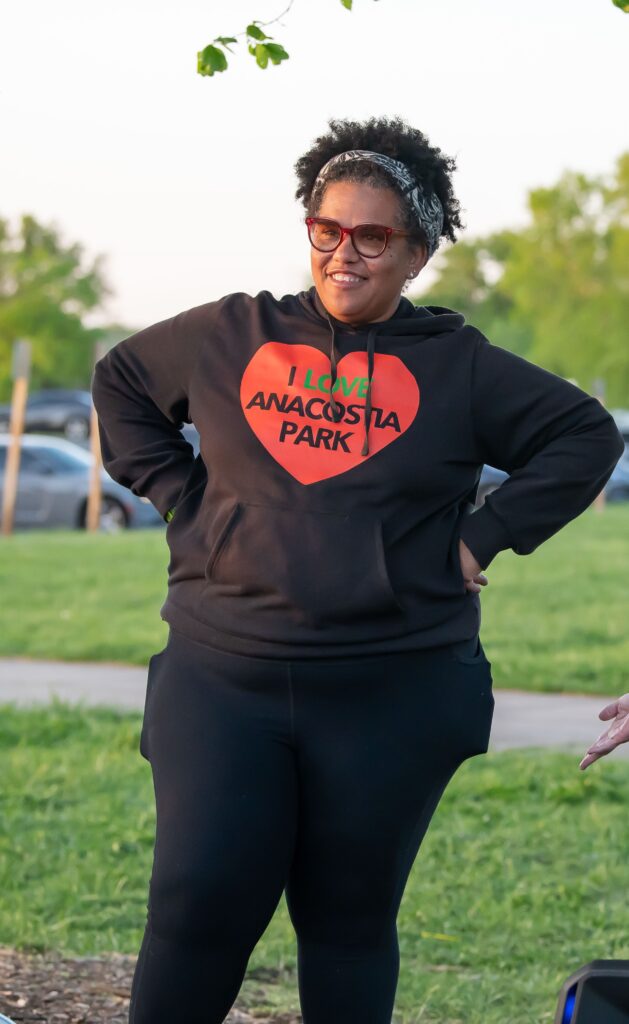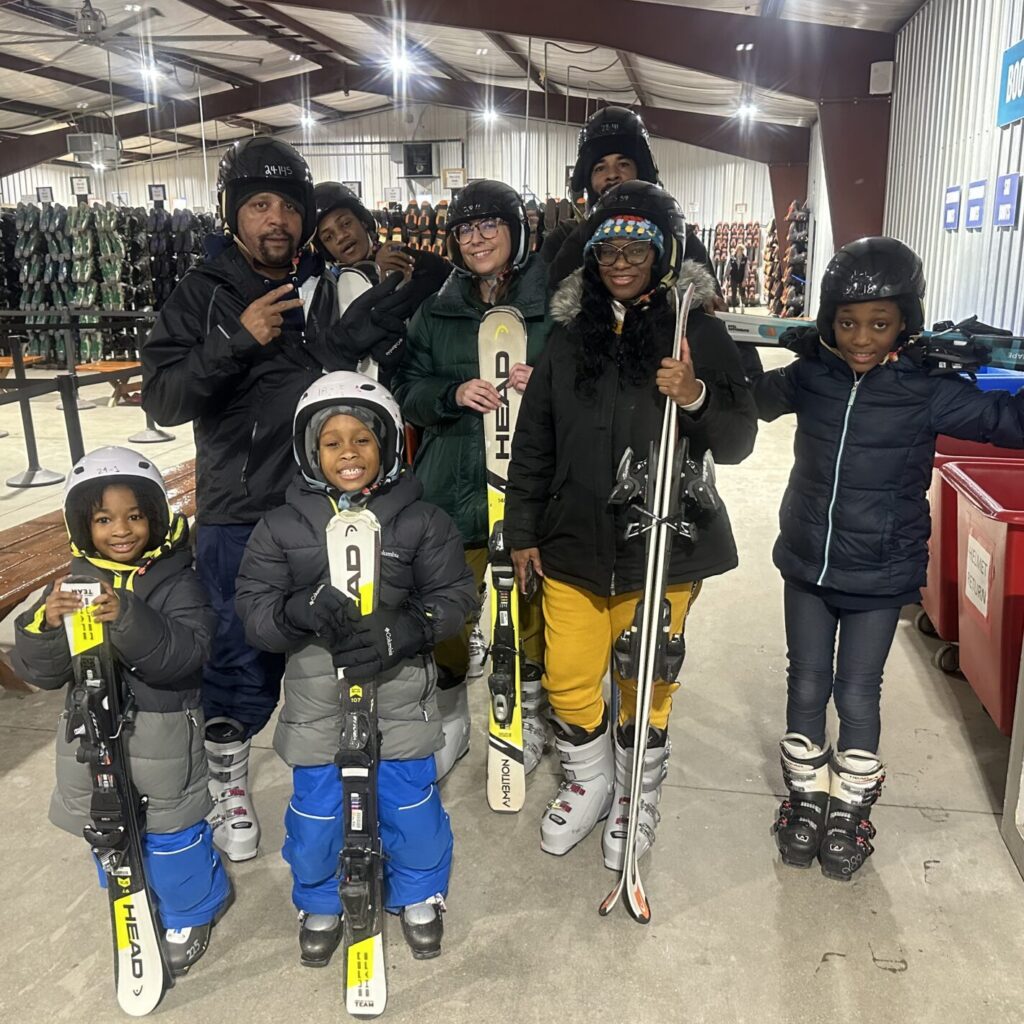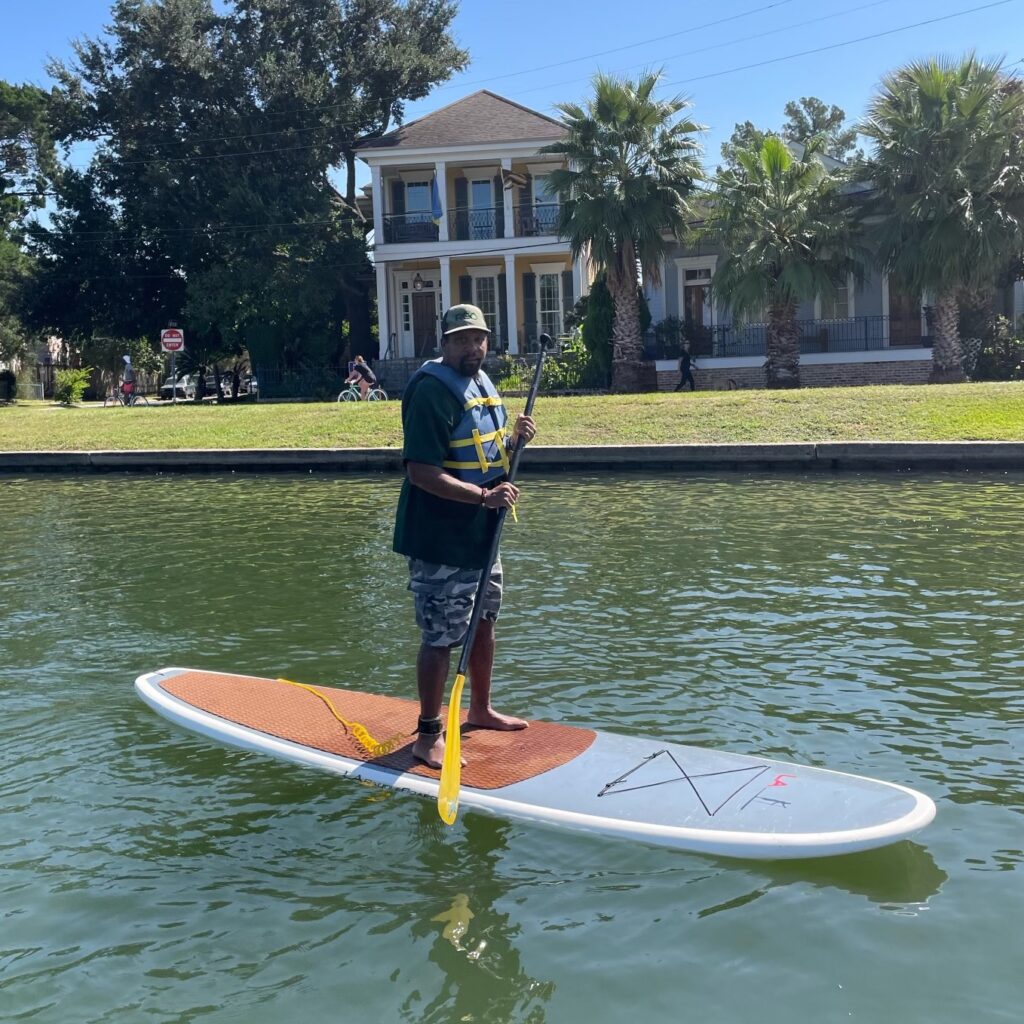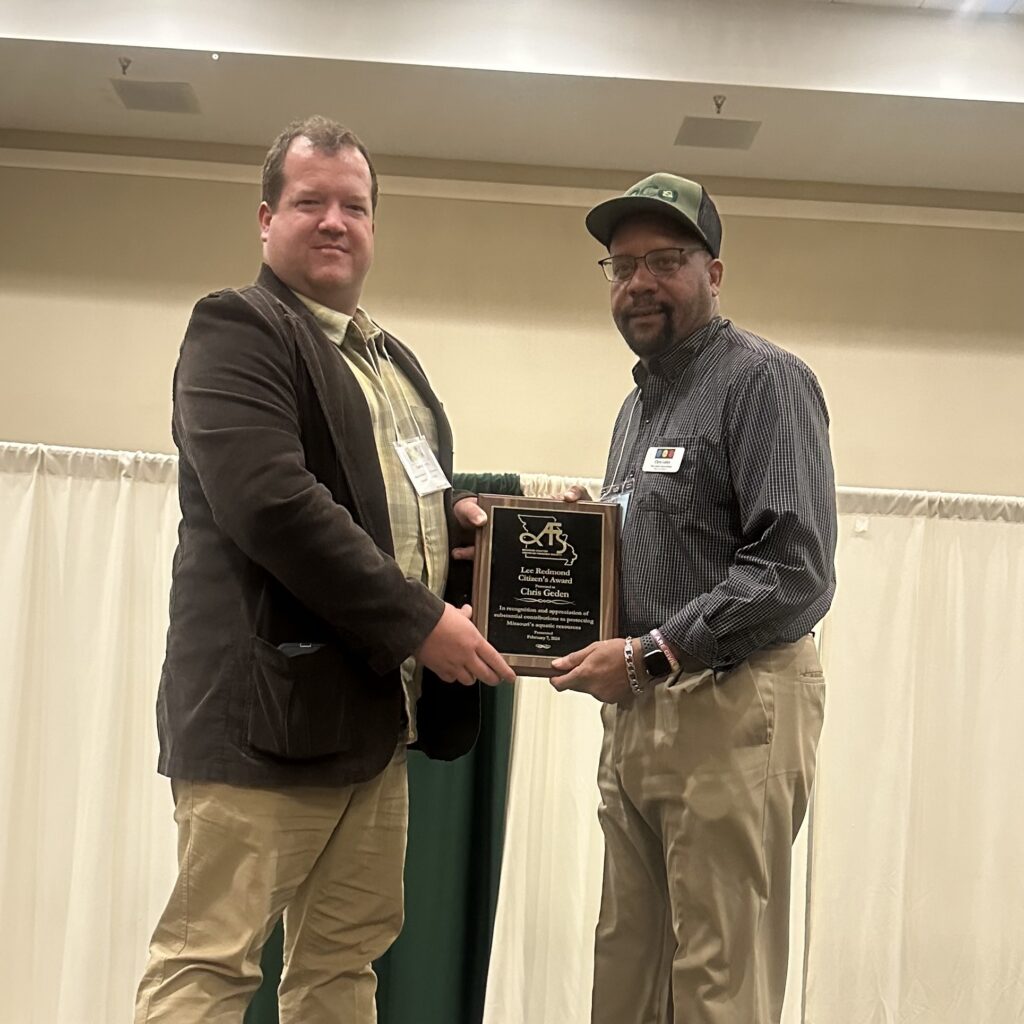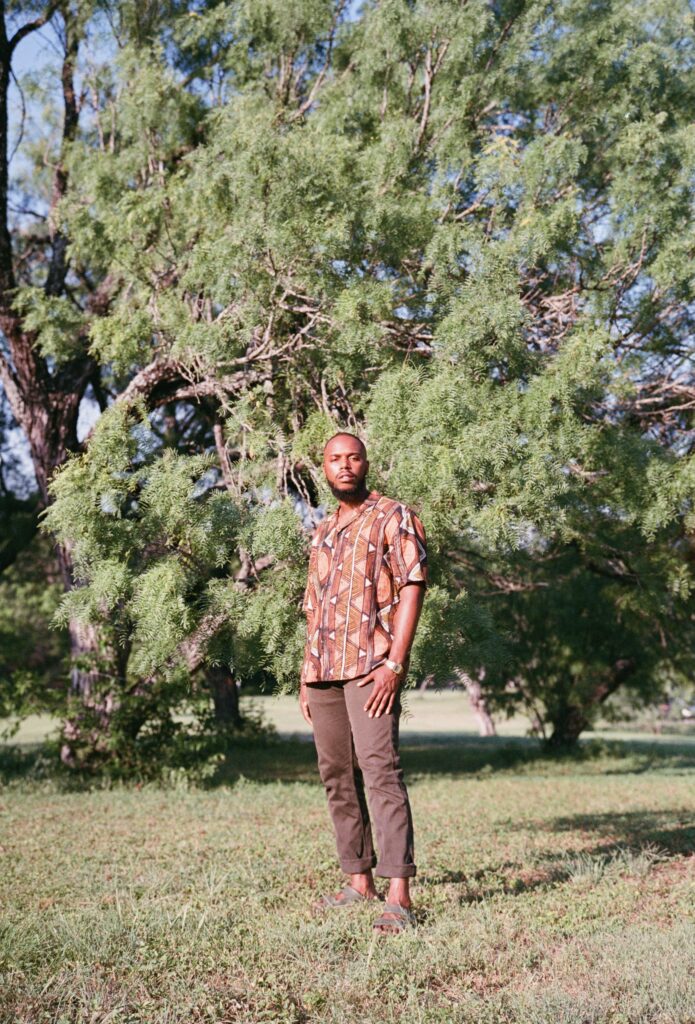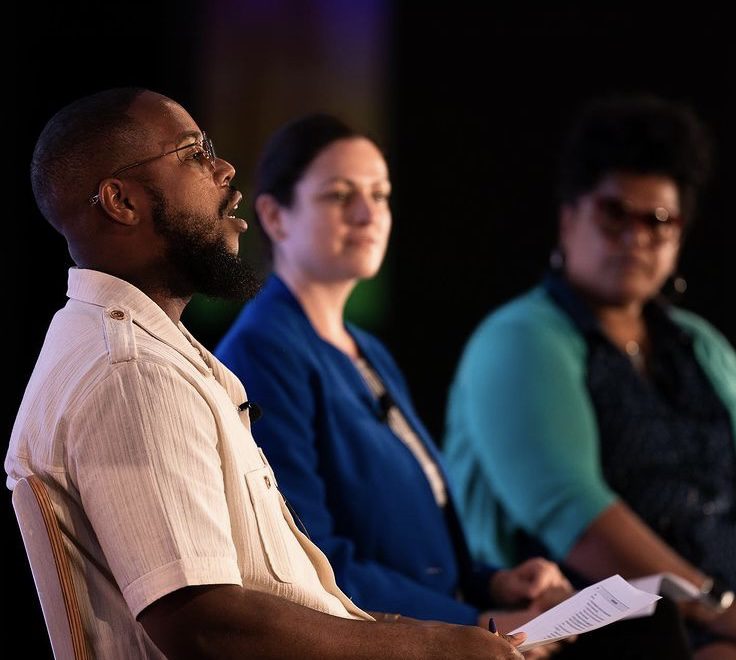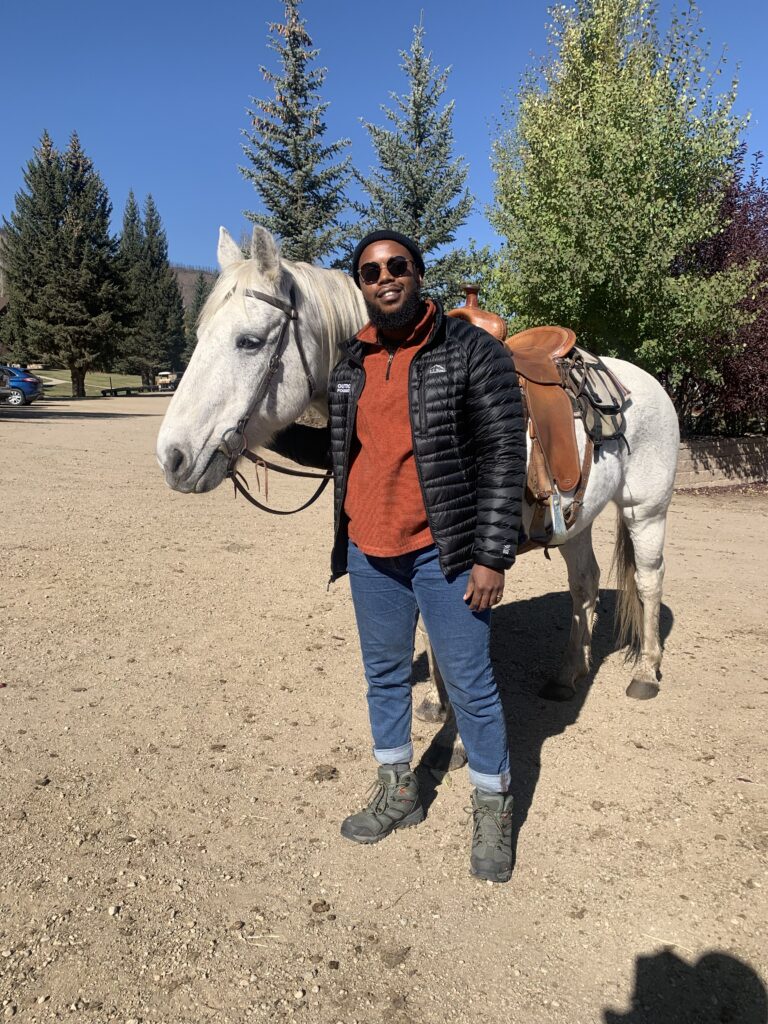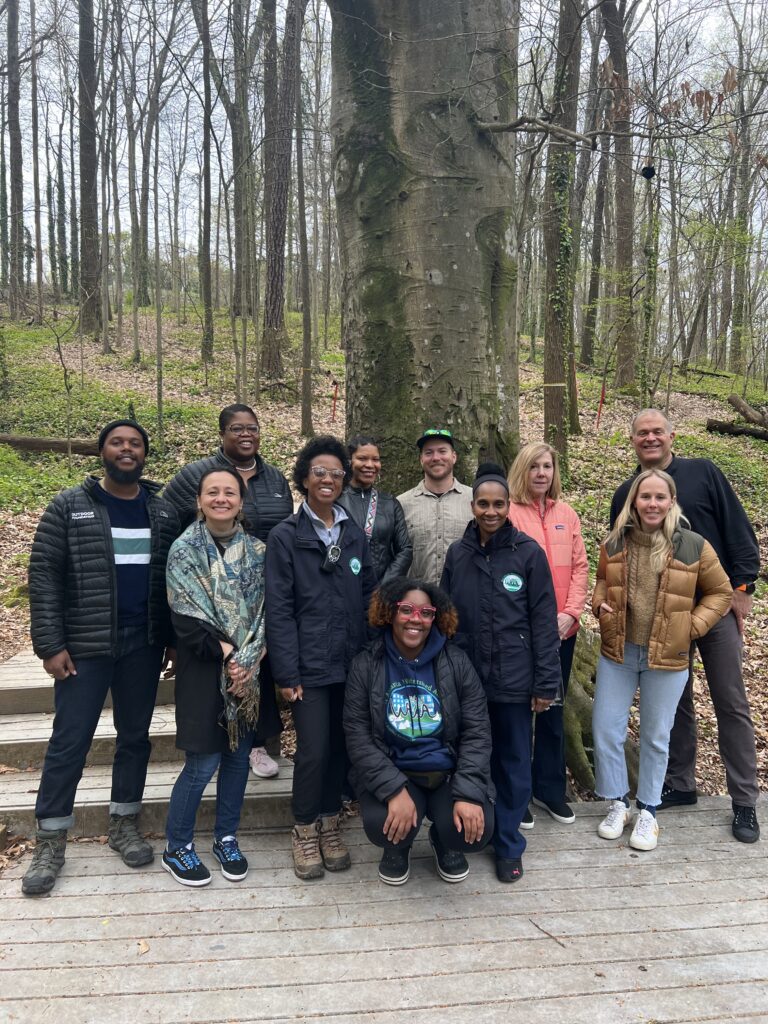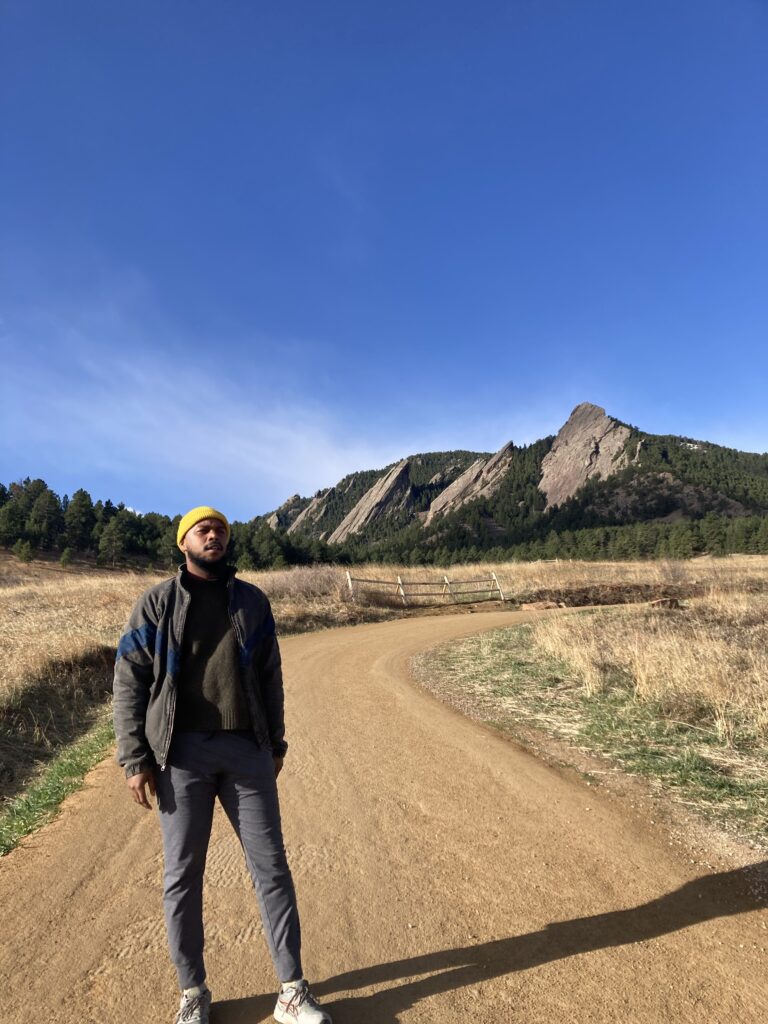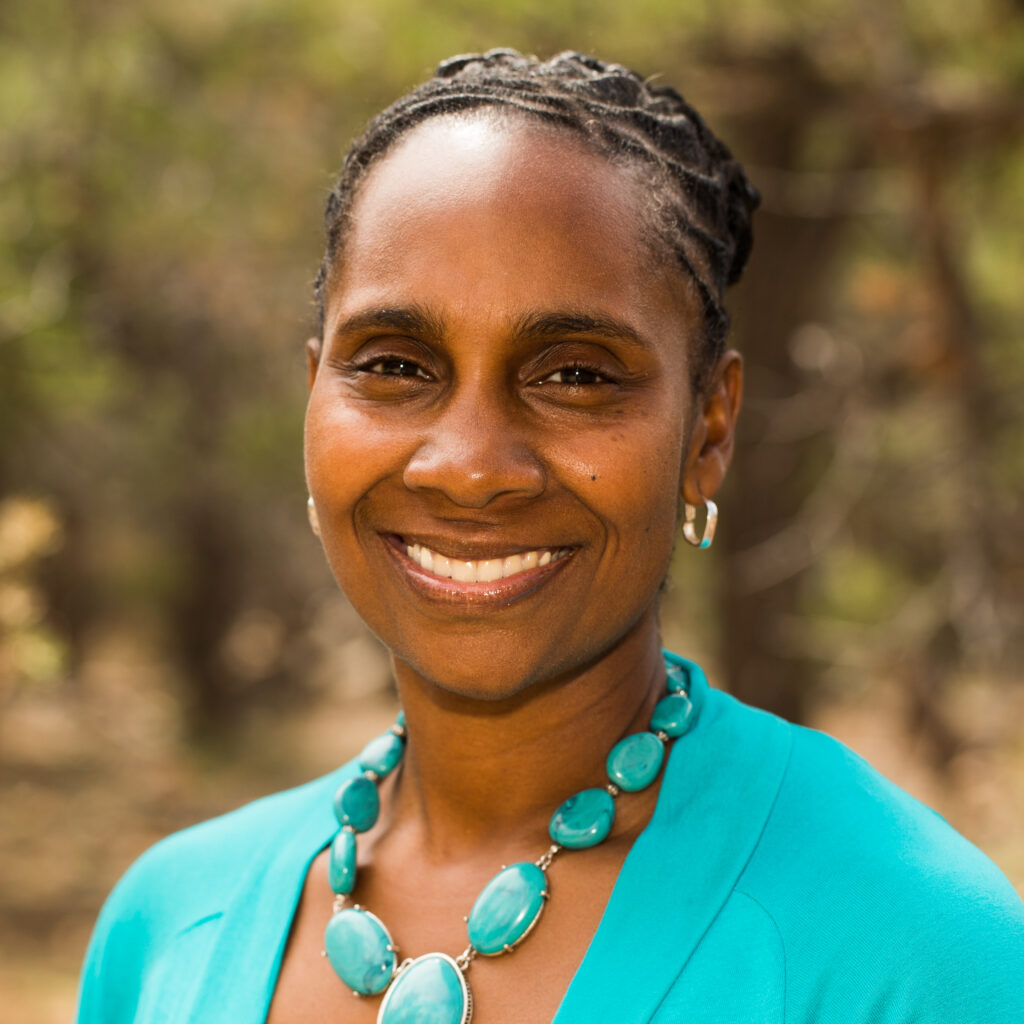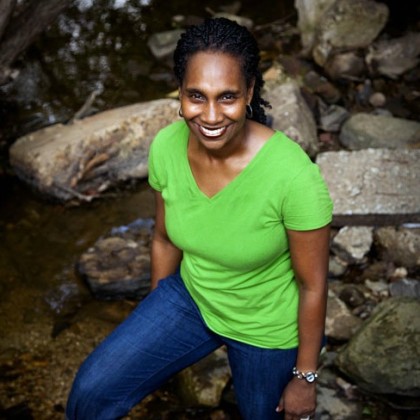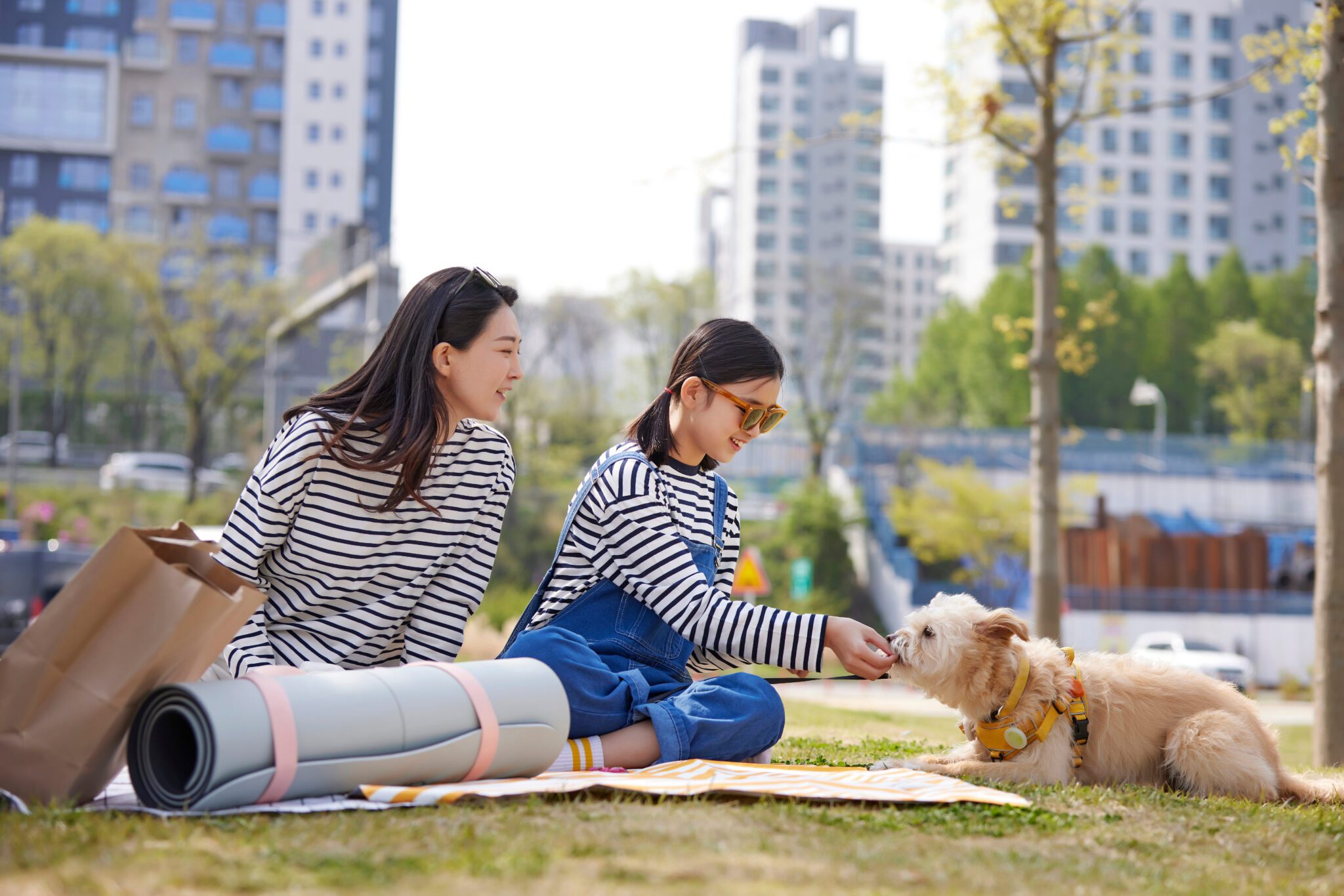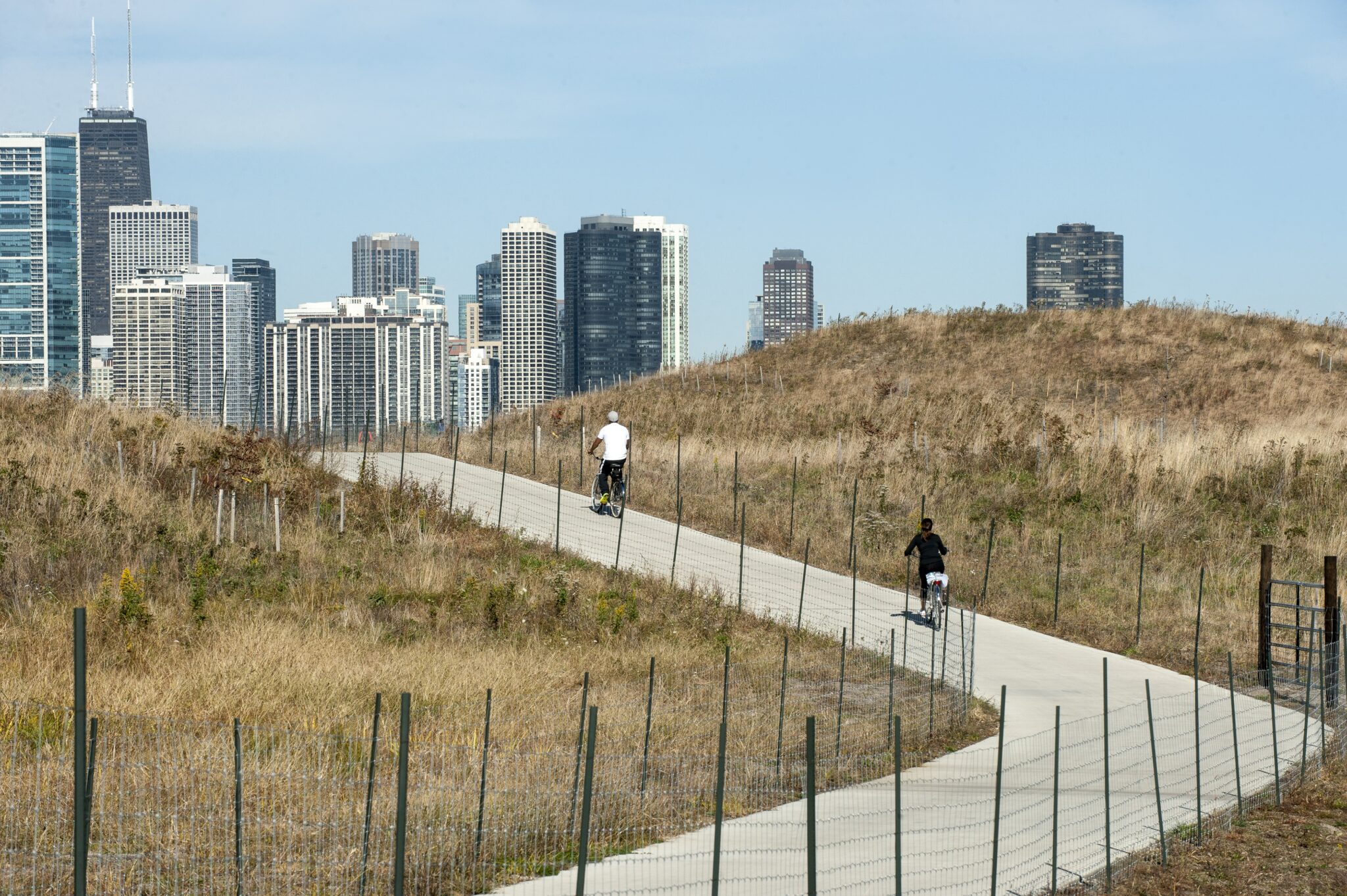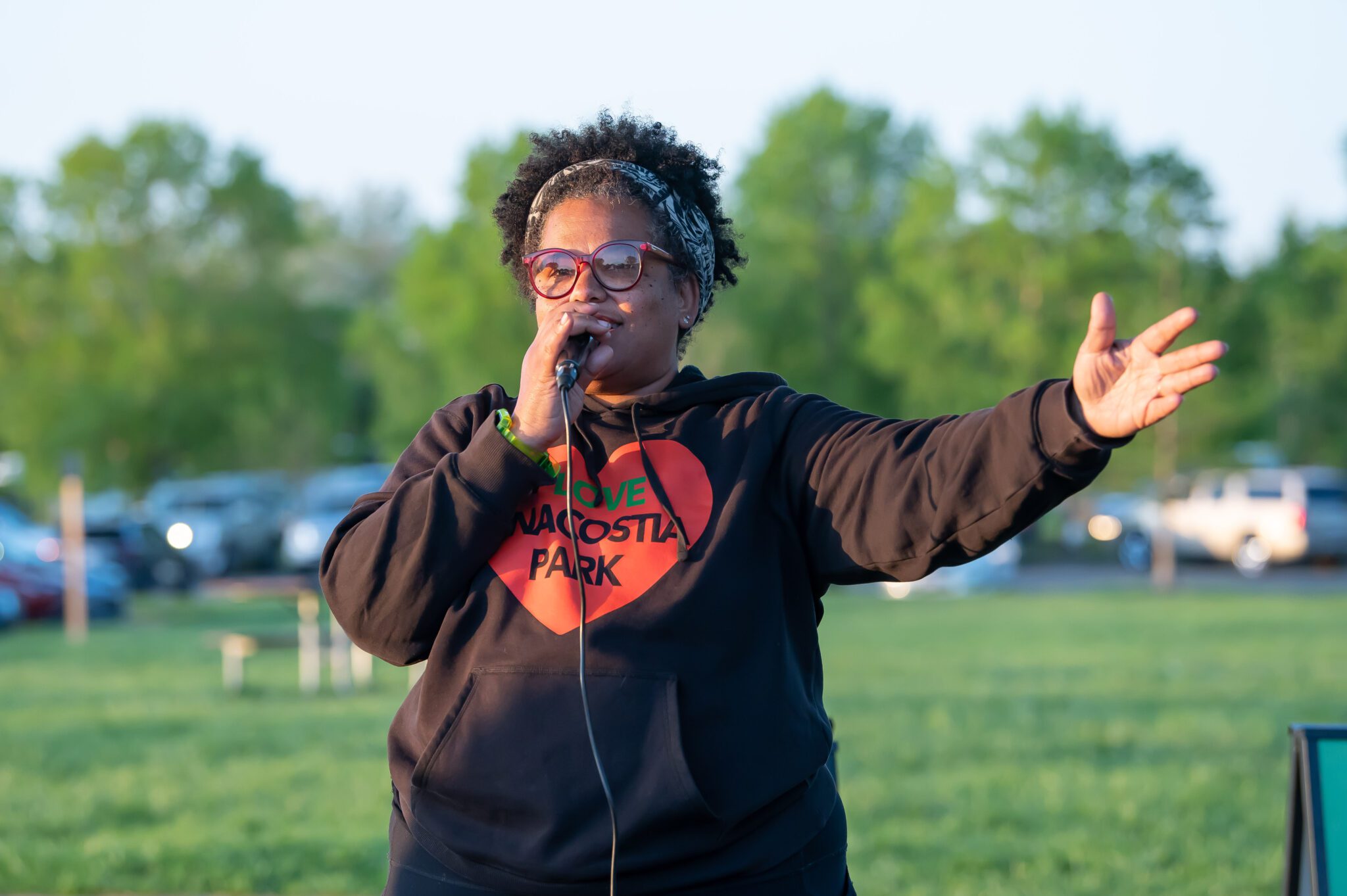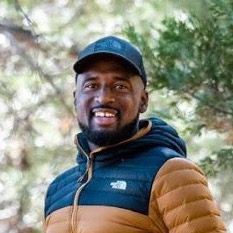The outdoor industry landscape is changing, and we’re here to help with timely insights to grow your brand. Discover the trends that defined outdoor retail sales last year in our new report.
Continue readingBlack History Month: Celebrating Black Leaders in the Outdoors
‘The Outdoors’ Are Urban, Too
Q&A with Rachel Felder, a naturalist at the City of Detroit Parks and Recreation Department
The Outdoor Foundation’s Thrive Outside Initiative is a national network of partners working to create a more inclusive and accessible outdoor experience for all. In this Impact Stories series, we talk to local Thrive Outside leaders to learn more about their community and their vision for the future.
For a prime example of how powerful collective impact can be, Thrive Outside Detroit is a community-led network involving organizations from local, city, state, and national levels—and has already directly led to events engaging hundreds of youth in nature-based activities.
We asked Rachel Felder, a naturalist with the City of Detroit Parks and Recreation Department, about the coalition’s programming, goals, and efforts to redefine the way people see the “outdoors.”
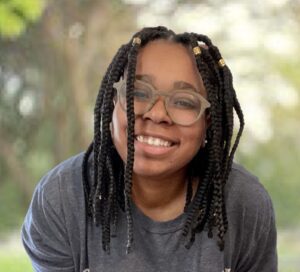
What kind of programming are you doing through Thrive Outside?
We have nature programming throughout the city and do a lot of work focusing on bridging the gap between nature and people. Recently, we had a three-day event to celebrate National Thrive Outside Day with the Canoemobile from Wilderness Inquiry in Minnesota. We collaborated with a lot of different partners, including the Detroit Riverfront Conservancy, the U.S. Forest Service, the Belle Isle Nature Center, the U.S. Fish & Wildlife Service, and the Detroit Public Schools Community District. We were able to get probably 200 youth out paddling on the Detroit River and learning about the environment surrounding it. It was a really great opportunity to uplift and amplify what the goals of Thrive Outside are. These three days came out of multiple meetings with community partners and getting together to figure out how to have an opportunity like this for youth within the city.
How do you define the “outdoors” in an urban environment like Detroit?
We’re really trying to emphasize that there’s no wrong way to be outside, as long as you’re respecting the Earth and the people around you and you’re being safe. It doesn’t have to be this extensive experience, if you don’t want it to be. Some of us don’t necessarily feel comfortable or are not used to doing certain activities outside, and outside isn’t something that’s normalized for us. So it just starts out with talking with people.
We have a lot of pocket parks, actually. We’re working on a grant from the National Parks & Recreation Association, through the City of Detroit Parks and Rec Department, to create seven new pocket parks. We’re working with community leaders in seven districts to figure out what they want and need in their communities, and help them build it.
There are so many ways to exist in nature, and nature itself is not going to judge you for the way you want to interact with it. In every experience, we’re trying to bring people to nature, and we’re also trying to bring nature to people.
What are some ways we can make the outdoors more inclusive and accessible?
Nature is a human right, so to speak. It’s important to be talking about all of these things with people and encouraging them to utilize the natural spaces they have in their area, and just to sit outside is a great thing to do. We try to encourage them, like, “Hey, try to do some of the activities you do inside, outside.” Like reading a book, or drawing a picture, or having a simple conversation. Sometimes, shifting things outside can shift the entire dynamic of what’s being done, like having a meeting outside versus inside can be transformational.
How are you finding and engaging people to interact with your programming?
There’s a mix of us doing outreach, and people seeking and finding us. We interact with a lot of people through our social media accounts. That is where we promote many of our events. But we find that a lot of people find out about us through word of mouth. We really try to engage with many organizations within the city of Detroit to spread the word that there are opportunities to get youth and adults of color outside and camping. We have camping leadership trainings for all experience levels. Once you’ve done the training, you have access to our gear library.
One of the reasons the Thrive Outside initiative is so cool and important to us is because we love partnership. One of my colleagues likes to say that there’s so much knowledge held within people, so through working with different organizations, through working with different people, it’s really cool and powerful to be able to meet people who want to do things with us and reach out and collaborate.
How does the collective impact model relate to the work you’re doing?
The collective impact allows for organizations to come together and figure out how to collaborate. Like, you’re having this program; how can we uplift it? It’s beautiful. It brings so many people into a space to have conversations that aren’t stagnant—they’re active conversations that result in plans and partnerships and long-term relationships. We’re already collaborating on a daily basis with other organizations, like Detroit Parks and Recreation employees, YMCA employees, and Sierra Club employees — and that’s just within our Detroit Outdoors collaborative. A lot of our missions align—at the end of the day, we want to get people outside, so let’s figure out how to do it together.
Having national partners, state-level partners, city-level partners, and people on the ground in grassroots organizations, all at the same table, is something unbelievable. Seeing the engagement that comes out of these conversations and the work that Thrive is uplifting is very powerful.
How have the outdoors been impactful to you in your own life?
Detroit Outdoors took me on my first camping trip when I was 16. It’s a really full-circle experience to be taking youth even younger than me on their first camping trips, and sharing those experiences with them and knowing some of the emotions they’re having. It’s great to see their faces when they see the stars at night, or when they see a deer that they don’t expect to see. Nature is somewhere that I find a lot of peace.
What does success look like? What do you want to see Detroit achieve through Thrive Outside and beyond?
It starts with knowing what people want to do. Our gear library has been a game changer in many ways because it’s allowed us to really bridge that gap. If we’re talking about 5, 10 or even 50 years down the line, I’d like to see so many gear libraries in recreation centers and community hubs throughout the city of Detroit. If people want to go camping or skiing or canoeing, they’ll have the ability to access a gear rental system where people are keeping equipment in great condition because they know other people are using it, too.
We have a lot of vacant lots in Detroit and I think there’s a lot of potential there, as well, to make use of what we have. Some people have installed shipping containers to create useful, recreational spaces in empty lots. We ask a lot of questions about how we can give people infrastructure and resources to utilize the spaces that they have. I’d love to see more of this—maybe shipping containers with access to laundry facilities or clothes libraries so people can have gear in the winter. I’d like to see hubs for nature programming, living trailers or tiny houses where people can borrow binoculars and access passive programming in the outdoors. I want to see more free libraries and creative reading nooks with ample lighting, just creating spaces to make people want to go outside and not have to question themselves. I want it to be accessible: all body types, all learning and physical abilities. I want to see people interacting with parks in so many different ways, whether it’s reading a book or doing ecology work or citizen science, or going camping. I just want people to feel comfortable going outside and to know that they have a right to be there.
Building Urban Networks to Break Down Barriers to the Outdoors
Q&A with Brooke Thurau, Conservation Partnership and Network Specialist for The Nature Conservancy in Chicago
By Kassondra Kloos
The Outdoor Foundation Thrive Outside Initiative is a national network of partners working to create a more inclusive and accessible outdoor experience for all. In this Impact Stories series, we talk to local Thrive Outside leaders to learn more about their community and their vision for the future.
Chicago has a wealth of outdoor opportunities within—theoretically—easy reach of its urban center. But lack of transportation, a history of discrimination, and manufacturing industries make it hard for many families to get there. The Nature Conservancy, the backbone organization of Thrive Outside Chicago, is working to connect, galvanize, and fund grassroots organizations throughout the city to meet people where they are.
We asked Brooke Thurau, who runs the organization’s Volunteer Stewardship Network, what to expect from the city’s Thrive Outside Initiative.
What are the barriers to outdoor access in the Chicago area?
Chicago has a history of redlining. Black and brown communities, particularly on the south and west sides, have historically been excluded from outdoor programming. They’ve also taken the brunt of environmental injustices. Industry in these communities has caused serious health problems for children, including asthma. There’s also a lack of accessible green space, and transportation in general is an issue. A lot of people want to visit the forest preserves and parks, but they can’t because they don’t have cars. Additionally, many people don’t feel safe in these spaces.
How do you get people more comfortable with the outdoors if they don’t feel safe playing outside, in nature?
It takes time. And a lot of trust-building. One of our key partners in the Chicago Thrive Network helps support and manage the natural areas on the south side. To try to encourage people from the community to participate in restoration workdays, a staff member hung flyers in local businesses. People weren’t showing up, so she started going to community-based health and wellness organizations and meetings. She went to teachers and had a lot of conversations about what the barriers were, then found different ways to engage people and help them be comfortable in the outdoors. So a lot of times, she brought nature to them. The Volunteer Stewardship Network provided funding and she held an outdoor festival at one of the natural areas with games for kids and engagement opportunities for adults in the parking lot area, so it wasn’t inside the natural area. There were groups there that brought rehabilitated animals they could introduce to the kids and their parents. They took a first step, not expecting folks to go into the forest and hike, but starting slowly with small introductions to the forest.
What goals are you working toward through the Thrive Outside Initiative?
Our goal is not to build a new network, because the work is already being done. Our goal is to provide capacity to what are often volunteer-run organizations. I’m excited to really be able to provide the support these organizations need, to help them strengthen the work they’re already doing, and to provide much-needed funding. A lot of these organizations aren’t 501(c)(3) organizations, so they can’t be recipients of funding because they don’t have that status. So they rely on community donations and volunteer time. We’re really excited to be able to provide small grants, and maybe even some larger capacity-building grants, tools and supplies, and outdoor gear—the things these organizations lack because they’re so community- and grassroots-based.
Some organizations don’t feel comfortable writing the grants or are really intimidated by the process, so we have offered to do oral applications. An organization can jump on a Zoom call and answer the questions verbally, and then I’ll type them out and have someone else review those applications so that it’s equitable. This has taught us that we need to make grant applications more accessible. We want people to feel comfortable and to be able to enjoy the outdoors, but there are also barriers in the process. We want to consider why some groups wouldn’t apply, and ensure we’re sharing the information widely so that people aren’t being left out.
How have you seen the collective impact model benefit the goals you’re working toward?
We’re working to build capacity and bring organizations together. The Nature Conservancy’s Urban Conservation Program has been working with a lot of grassroots organizations for years, which includes places of worship, community gardens, environmental justice organizations, and more. There’s a huge environmental justice movement in Chicago given the damage to communities from industry. There are stewardship and affinity groups like Out in Nature, which is a group of LGBTQIA+ members getting outdoors together. Some of these groups need, say, binoculars, or birding guides. Through Thrive Outside, we’ll be able to provide these groups with the things they need to enjoy the outdoors.
We’ve also been able to connect people with varying levels of knowledge. So, a brand-new community garden whose leaders have never done this work before but saw the need in the community can connect with other community gardens that have been around for a long time so they don’t have to start from scratch.
Can you share an example of another organization that’s working to bring down these barriers?
There’s an organization that’s part of the Volunteer Stewardship Network, which we’re hoping to engage through the Thrive Outside network. It’s a family-run organization called All Things Through Christ Outreach Ministries. They’re in West Englewood, on the west side of Chicago, and they’re in a food desert. At the time this outreach ministry started, there were no green spaces in the area, and with public transportation being the primary mode of transportation, people were unable to get to and from the nearest grocery store. People resorted to gas stations and liquor stores for snacks, so All Things Through Christ started distributing one bag of essential food and personal hygiene items once a month out of the lower level of their church.
This monthly distribution has expanded into a full-service community outreach organization, offering residents access to a full-service weekly client choice food pantry and a youth job skills development and mentorship program. The family and its partners realized the health disparities plaguing this community and the lack of access to healthcare and fresh fruits and vegetables, and they began to steward land contiguous to the building site of their future community outreach center. They’ve been growing food and flowers and educating the community about healthy eating and the environment. They also run programs for youth and adults to engage people in growing flowers and vegetables in raised garden beds, so kids get to dig their hands into the dirt and plant seeds and harvest plants that become meals. Over the summer, the kids get to watch things grow slowly. A lot of these children and adults live in rental spaces, such as highrises, that don’t have yards or landscaping, and they don’t really even have grass in their communities, so this is life-changing and brings hope to the community.
How do you collaborate with other groups and uplift other organizations’ work?
I like the word “uplift.” I’ve been in the conservation field for 15 years. My graduate research was based on equity in conservation and I did a lot of work in Central America, in Panama. I saw the same thing over and over where large conservation organizations, with good intentions, would go into a community where there’s a valuable resource and kind of go about it all the wrong way. Like, “We’re here, this is what we’re gonna do, and you can partner with us, but this is our plan.” Now, our approach through the Nature Conservancy, especially in our city’s work, is to meet organizations where they are.
What does that look like?
We don’t want to reinvent the wheel, and we don’t have a desire to tell these groups what to do, like what the conservation field has done in the past.
It’s important to go to places of worship, attend environmental justice meetings or events, go to fairs or events in the communities where there are needs and organizations already working, and really just listen. I think that is one of the most important things, just to go into communities and listen and get to know one another and find out what’s really going on. There are a lot of similarities among these communities in Chicago, but there are a lot of differences, too. They’re very unique, with a unique set of barriers and a unique set of solutions. I think the goal is to really learn the needs of each one and build trust.
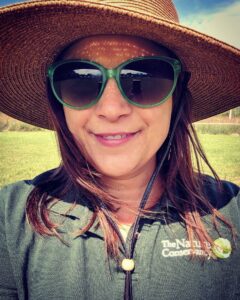
The Way We Define ‘Outdoors’ Needs to Change
Q&A with Akiima Price, Thrive Outside Washington D.C. Director
By Kassondra Kloos
The Outdoor Foundation’s Thrive Outside Initiative is a national network of partners working to create a more inclusive and accessible outdoor experience for all. In this Impact Stories series, we talk to local Thrive Outside leaders to learn more about their community and their vision for the future.
Throughout her career, Akiima Price has been working to increase participation in the outdoors—and to change the way we define it. There’s no “right” way to spend time outdoors, she says. Sitting in a park playing Uno with your kids, or painting your nails at a picnic table, or just having a conversation, is better than not spending time in that park at all.
As the Thrive Outside director for Washington, D.C., Price is building a network of organizations to help children and adults forge meaningful, lasting connections with nature.
We asked her about her plans for the Thrive Outside Washington, D.C. Community, and how the outdoor industry can better collaborate with groups breaking down barriers in their own communities.
How do you define the “outdoors?”
I think it’s dependent on your environment. If you live in a rural area, your outdoors could be trees and grass. If you live in an urban area, your outdoors could be simply not indoors. As an urbanite, when I can choose where to be outdoors, I choose to be near water. Some people don’t have a choice about what their outdoors is, in terms of where they live. Most times, when people say outdoors, you think trees, grass, pleasant—you don’t think scary. But for some people, if you say, “go outdoors,” it’s scary, because they may not live in areas that feel safe.
It’s important to understand that being active in the “outdoors” doesn’t mean the same thing to everybody. Some feel like if you’re not kayaking or doing traditional athletics or recreation—it doesn’t “count.” We need to shift that. People use parks and outdoor spaces to play cards, to play basketball, to have cookouts. Those experiences count.
What are some ways you’re addressing safety concerns and helping people feel more comfortable in parks and green spaces?
We’re doing way more programming, from May all the way through November. We have a skate pavilion, so people often come on their own and skate. We’ve also been doing a monthly late-night skating program. We keep the park open until 10 p.m. and have DJs and concerts and incredibly thoughtful programming—like family portraits at every event, and making homemade bug spray in the summer months. It’s looking a lot better, and people are feeling safer.
What motivates your interest in working with Thrive Outside and the outdoor industry?
Oh gosh, it’s so pregnant with possibility. The industry wants to address access, and I’ve got a laundry list of access issues. This Thrive work helps me connect with other people in other cities who have similar challenges, who I can learn from. Everybody has something to contribute and we see ourselves in each other.
What are some examples of programming you’ve done with Thrive so far?
My first thing out of the gate was the Thrive Washington, D.C. After School Teen Respite Program. We were on the heels of a youth-fueled gun violence epidemic that summer in Washington, D.C. and realized we weren’t doing much with teens between ages 14 and 19. We wondered how can we use Anacostia Park to keep kids safe and provide rest or relief during out of school time hours when they were most vulnerable. We realized early on we would need to provide transportation, food, and a stipend, and make this all about recreation not so much education. This needed to be an opportunity for them to just be kids.
So we recruited 30 stressed youth to participate in a 6-week after-school program in our park. We gave everyone a time card, and asked them to fill out four 30-minute time slots with whatever they wanted. At least one had to be the “Me Time” station where we worked with an organization that did group therapy with kids, and they loved it. Other activities included riding a bike, skating, and playing basketball. For every activity they completed, they got $5—so $20 per day, every day after school, for six weeks. It was so nice just seeing them giggle and chase each other. These are older teens who are too cool for school, but ultimately, it was amazing.
How have the outdoors been important in your own life?
I grew up in the 70s in an area with a lot of urban development going on. My dad grew up in the country and my mom grew up on a farm, so they exposed me to camping and fishing and the outdoors when I was younger. When I was old enough to play outside, I was fascinated by caterpillars, and even more fascinated when I learned what they turn into. I was always fascinated and connected and loved nature, animals, and water. By the time I was old enough to have a car, I sought out camping experiences and the ocean. The ocean is my therapist. During all the coverage of George Floyd, oh my God, it was so heavy. It impacted my work, where so many people wanted to have deep conversations about things I had been saying all along. I was losing it, and I just remember going out to the eastern shore. I would drive across the Bay Bridge and just feel like a whole new person.
What are your goals for the next few years with Thrive Outside?
I’m setting the groundwork for creating networks to put existing groups in contact with one another. Imagine a room where we’ve got existing environmental groups together, and then we bring in social services, human services, and non-traditional, justice-focused partners. That’s phase one—establishing the room and making sure people have everything they need so they don’t leave that room while I go out and get other groups involved. Once we’ve got diversity in that room, we can do an assessment so everyone can say, “Hey, I do this well, and here’s where I need support.”
What kinds of support could brands offer to organizations like those you work with to make a meaningful impact?
Groups are often used to giving money, but sometimes giving gear can be even more useful. A coat manufacturer, for example, could outfit an elementary school in a low-income area so the kids can have recess outside during the winter. Sometimes parks really just need chairs, or hammocks. Not a lot of people get to lay in a hammock in their lifetime. It seems really simple, but if more parks had freestanding hammocks and people could experience them, my goodness, that’s my dream.
I had this master list of $14,000 worth of gear and it included things like kayaks and really nice binoculars. If you’ve never experienced a really nice pair of binoculars, you’re missing out. And that’s another reason for the industry to get involved in this way—people spend money on what matters to them, including low-income people. Right now it just looks like a bunch of rich people who make cool stuff because they like to be outside, but a lot of this stuff is actually very practical, and just needs to be more inclusive.




